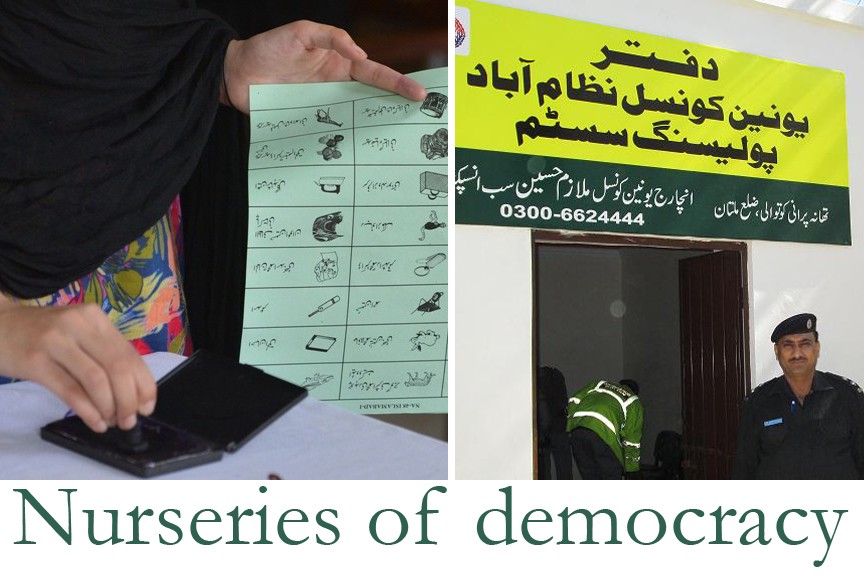
There is consensus that the real democracy is only bottom up -- one which is owned and experienced by the people.

Pakistan is a country of curious contradictions. People breathe politics and swear by democracy. Yet for about half of its life, it has been ruled by military dictators. These dictators may have shunned politics and political parties but they did attempt a formal local government system. Of a different variety each time, this system was always apolitical and most efficient in terms of holding regular elections.
Thus, local governments or the nurseries of democracy became a political constituency of dictators in Pakistan’s case. In the latest experience, the push to initiate local governments came from international financial institutions; a conditionality so to speak.
Is this why the political parties remain wary of this most important tier and the civilian governments have been most reluctant to hold it in place? The entire democratic discourse, as Tahir Mehdi tells us, is top down while local governments remain at the root of democracy. They are "the main interface between democracy and people".
The current political situation [read crisis] talks too much of the sham democracy but in doing so it only refers to the provincial and the federal tiers. Is the absence of the third tier that makes it a sham system a question worth asking?
There is consensus that the real democracy is only bottom up -- one which is owned and experienced by the people.
But this is a country of curious contradictions: a country where the job of bringing in the local governments is now shared by the Supreme Court and the Election Commission of Pakistan. There are either delimitations to be revised or a new biometric system to be put in place. These are just some of the excuses put forth by all provincial governments.
The nurseries of democracy are meanwhile nowhere on the scene. This is what our Special Report is all about.